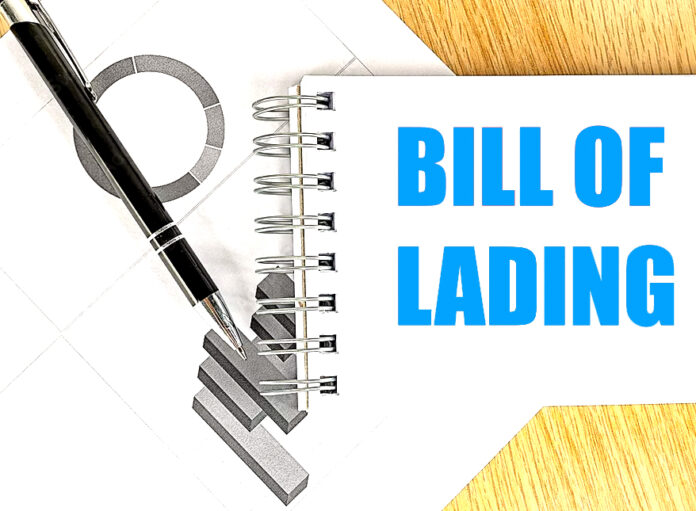A Bill of Lading (B/L) is a crucial document in international trade that serves as proof of shipment, receipt of goods, and a title of ownership. It describes the terms & conditions of the transportation contract between the shipper and the carrier. Below are the step-by-step guide to understanding and using a Bill of Lading:
Step 1: Initiating the Shipment
- Shipper: The seller or exporter arranges the transportation of goods with a carrier e.g shipping company or freight forwarder.
- The shipper will arrange the goods for shipment, and a shipment contract is formed between shipper & the carrier.
Step 2: Booking and Preparing the Goods
- Cargo Preparation: The goods are packed as export oriented and ready for shipment.
- Carrier Booking: The shipper provides the all details about the shipment to the carrier, including:
- Description of goods
- Quantity and weight of goods
- Country of Origin and destination of arrival ports
- Shipping terms like Incoterms
Step 3: Issuance of Bill of Lading
- When the cargo is loaded, the carrier will issue the Bill of Lading to the shipper as a receipt for the goods. This document can be:
- Negotiable: This is transferable to a third party.
- Non-negotiable: This is a receipt only for the named consignee e.g buyer.
- The Bill of Lading generally includes:
- Shipper’s and consignee’s details
- Vessel name or transportation method
- Date of shipment
- Description of the goods like type, quantity, etc.
- Port of loading and port of discharge
- Terms and conditions of the shipment
- Freight payment terms & conditions
Step 4: Sending the Bill of Lading to the Importer
- When the Bill of Lading is issued, then the shipper sends the original Bill of Lading to the buyer or consignee (importer) through their bank if using a Letter of Credit or via direct delivery.
- The original Bill of Lading is necessary for the consignee to take authorization of the goods.
Step 5: Goods Arrival and Customs Clearance
- When the goods arrive at the destination port, then the consignee (importer) submits the original Bill of Lading to the carrier.
- After that the customs process begins, and the consignee will need to provide the Bill of Lading for clearing the goods by customs.
Step 6: Delivery of Goods
- After the consignee clears the goods through customs and submits the Bill of Lading to the carrier, the goods are delivered to the consignee or their authorized agent.
- If the Bill of Lading is negotiable, then the consignee can transfer its ownership to another party by legalizing the document.
Step 7: Endorsement (if applicable)
- If the Bill of Lading is negotiable, then the consignee can legalize it to transfer ownership of the goods to the another party, such as a buyer or lender.
- The endorsement engages in signing the document and providing it to the new owner.
Key Types of Bills of Lading:
- Straight Bill of Lading: It is Non-negotiable. It is given to a particular consignee and cannot be transferred.
- Order Bill of Lading: It is Negotiable. The consignee or their authorized agent can transfer the ownership to a third party by legalizing the document.
- Seaway Bill: It is a simplified version of the Bill of Lading, which is usually non-negotiable, and is often used for domestic or short-distance shipments.
- Airway Bill: This is used in air freight, serving a similar purpose to the Bill of Lading for sea freight.
Important Notes:
- Legal Proof of Ownership: The Bill of Lading acts as legal proof that the consignee has the right to claim the goods.
- Types of Charges: Freight charges and other costs should be clearly outlined in the Bill of Lading, specifying who is responsible (shipper or consignee).
- Discrepancies: If the goods do not match the description on the Bill of Lading (damage, wrong quantity, etc.), then the consignee can make claims with the carrier.
Common Errors to Avoid:
- Inaccurate Information: Must ensure that the details on the Bill of Lading like quantity, weight, description match the actual shipment to avoid extension period.
- Loss or Damage: The original Bill of Lading is a crucial document. If lost or damaged it can create complications in claiming the goods.




